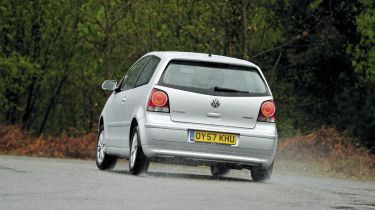VW Polo Bluemotion
Styling and engine tweaks help Polo clean up act
It seems crazy now, but when Volkswagen took the wraps off the Polo Bluemotion in 2006, company bosses weren’t sure whether to bring it to the UK. Two years on, and there’s a waiting list for the green baby – one of only two mainstream models to undercut the magic 100g/km CO2 output. With a Bluemotion Golf and Passat already launched, VW’s eco brand looks set to be a household name.
So how is the Polo so clean? In addition to its fuel-sipping three-cylinder diesel, the Bluemotion gets aerodynamic bodywork, low-resistance tyres and lightweight wheels, plus a revised five-speed box. Stop-start technology is set to follow soon.
The solid grille and unique bumpers make a statement without spoiling the car’s proportions. Just don’t expect Prius-style economy read-outs inside. The cabin is still well built, but the design looks dated next to the latest superminis.
On a test drive, you will soon notice that the VW’s rumbling three-cylinder engine note gets raucous at high revs. Otherwise, there’s little to separate the frugal oil-burner from other TDIs.
Only at higher speeds does the Polo behave differently. While a tall top gear makes it relaxed on motorways, on more challenging roads it’s less convincing. It wears identical green tyres to the Ibiza ECOmotive, and so grip suffers in the wet.
Our test car had covered 7,700 miles, and so it performed better than the Fabia, which had done less than 1,000 miles. But the VW can’t match the Skoda on price. The base Bluemotion is £12,125; add air-con, and it costs £12,940. Owners don’t have to pay any road tax, but the Polo’s flawed handling, ageing design and high prices mean your money is better spent elsewhere.
Details
Price: £12,125
Model tested: Polo Bluemotion



